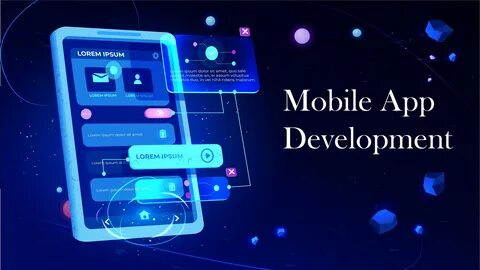Attribution is one of the most important foundations of app marketing. For Android developers, it provides the data needed to understand where installs come from, which campaigns deliver value, and how to optimize spend. Without attribution, growth efforts quickly become guesswork.
An attribution SDK is the tool that makes this measurement possible. By integrating it into an app, developers can connect installs and events with marketing campaigns, while giving marketers a clear view of performance.
How Android Attribution Works
When you integrate an Android attribution SDK, the app gains the ability to capture signals from the Google Play Install Referrer, match them to ad clicks, and send accurate install and event data to attribution servers. This allows installs, signups, purchases, and retention events to be tracked consistently across networks.
The SDK also ensures deduplication, filters invalid traffic, and provides developers with logs and debugging tools. Instead of manually coding these processes, teams can rely on the SDK to provide standardized, policy-compliant measurement.
Key Components of the SDK Flow
An Android attribution SDK typically performs several steps behind the scenes:
- Initialization occurs when the app launches for the first time. The SDK generates identifiers and prepares to log events.
- Install Referrer capture happens when the app reads the referrer string from Google Play to determine which click led to the install.
- Install event logging sends the first open event tied to that referrer to the attribution backend.
- Post-install event tracking covers actions such as registrations, purchases, or tutorial completions.
- Data upload packages these events with metadata and transmits them to the attribution server.
- Attribution logic matches the events to campaigns, applying rules for last click or other models.
These steps run invisibly to the user but provide vital measurement for the business.
Integration Steps for Developers
Setting up an SDK correctly is critical. The basic steps are:
Many developers also build a staging environment to verify attribution before rolling it out to production.
Privacy and Compliance
Privacy is a growing priority in mobile measurement. With Android, developers must follow Google Play rules and global laws like GDPR and CCPA. Best practices include:
- Providing in-app consent options for users to opt out of tracking.
- Collecting only the minimum data required for attribution.
- Avoiding persistent identifiers without disclosure.
- Documenting how events and referrer data are handled.
Following these principles builds trust with users and ensures compliance with regulations.
On Android, attribution relies heavily on capturing the Install Referrer. Developers should follow the official Google Play Install Referrer API documentation to handle this signal securely and avoid data loss.
Common Challenges and Solutions
Even experienced teams encounter issues when integrating SDKs. Some common problems include:
- Duplicate installs caused by initializing the SDK more than once.
- Lost campaign data when links are missing parameters.
- Referrer not captured if battery optimization or OS quirks block broadcasts.
- Unmapped events leading to gaps in reporting.
- Performance impact if SDK code is not optimized.
To prevent these issues, developers should always keep SDKs up to date, review integration logs, and test across devices with different Android versions.
Benefits for Marketers
For marketing teams, Android attribution SDKs are essential for:
- Seeing which campaigns drive installs and purchases
- Measuring retention and cohort performance over time
- Detecting fraud and invalid traffic
- Comparing user quality across channels
- Justifying budget allocation with accurate data
This clarity allows marketers to scale campaigns with confidence.
Benefits for Developers
Developers also gain significant value from SDKs:
- Reduced workload thanks to prebuilt methods for event tracking
- Easier debugging through logs and test tools
- Assurance of compatibility with Play Store rules
- Reliable event delivery even in poor network conditions
- Freedom to focus on features instead of attribution code
Integrating an SDK removes complexity and lowers the risk of costly errors.
Real-World Example
Consider an e-commerce app running ads on Google Ads and a large affiliate network. Without an SDK, both networks claim installs, inflating results. Purchases cannot be tied back to the right campaign.
After integrating an Android attribution SDK:
With this information, the team adjusts budgets and grows revenue efficiently.
Checklist Before Launch
Before going live with an SDK, confirm that:
- The SDK initializes only once
- Install Referrer capture works on test devices
- Install and first open events fire correctly
- Custom events are mapped consistently
- Deferred deep links route users to the right screens
- Opt-out consent options are available
- Events cache and resend when offline
- QA covers multiple OS versions and devices
A final review ensures that attribution is stable in production.
Future Outlook
Android attribution will continue to evolve. Google’s Privacy Sandbox initiative will bring new APIs for privacy-preserving measurement. SDKs will adapt to capture signals in ways that comply with these frameworks while still giving marketers actionable data.
By investing in solid SDK integration now, teams prepare for these changes and avoid disruptions later.
Conclusion
An Android attribution SDK is more than a technical add-on — it is the foundation for accurate, trustworthy measurement. It connects ad clicks to installs and in-app events, enables marketers to evaluate campaigns, and saves developers from building attribution from scratch.
When integrated correctly, it empowers teams to reduce wasted spend, protect against fraud, and scale growth with confidence. For any Android app aiming to succeed in today’s competitive market, attribution SDKs are not optional. They are essential.


